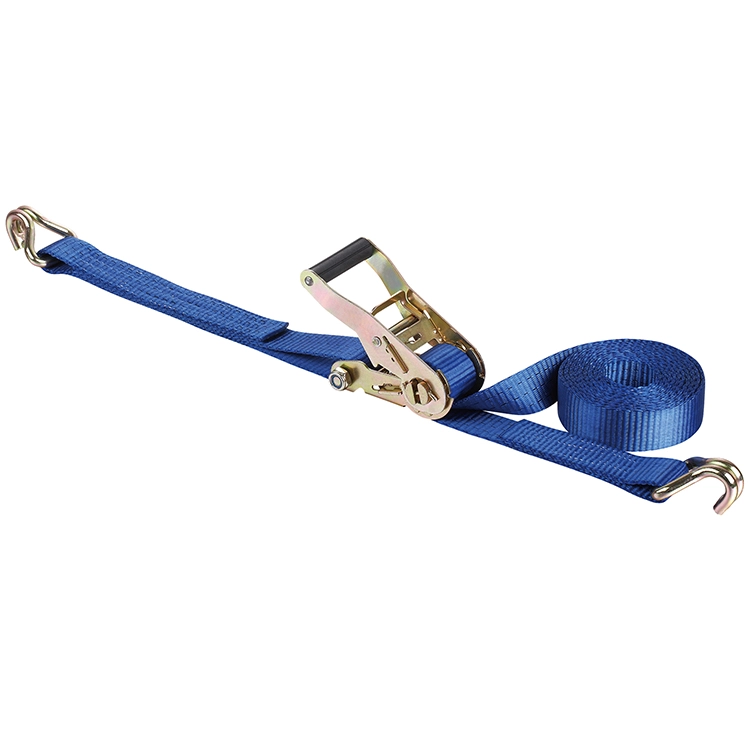How do People Inspect a Rope Strap for Damage or Wear Before Use?
2025-10-31
Before any lifting, towing, or cargo-securing task, inspecting a rope strap for potential damage is critical. At Ningbo Kingslings Import And Export Co., Ltd., our team emphasizes this step as part of standard safety protocol. Using webbing and cargo control products that are in perfect condition ensures operational reliability and prevents accidents during use. This article explains how people typically perform inspections, what signs of wear to look for, and the standards we follow in our factory for every product we deliver.
Understanding the Importance of Rope Strap Inspection
Rope straps are essential tools for lifting, securing, or transporting goods safely. However, their performance depends on regular visual and tactile inspections. Our factory implements strict quality control to guarantee that each Webbing and Cargo Control product meets safety standards before shipment. For end users, pre-use inspection is the final line of defense. A damaged strap can easily fail under tension, causing property loss or personal injury. That is why we always advise checking every strap before operation.
Step-by-Step Guide: How to Inspect Rope Straps Properly
People typically inspect a rope strap through a systematic process that includes visual checks, tactile testing, and environmental assessment. Here is the method commonly used in our daily operations at Ningbo Kingslings Import And Export Co., Ltd.:
Step 2: Check for Broken or Flattened Fibers – Using light hand pressure, feel along the entire rope to detect stiff or flattened sections that may indicate internal damage.
Step 3: Inspect Eye Loops and End Fittings – Examine stitching, loops, and metal hooks for rust, cracks, or deformation. In our factory, each Webbing and Cargo Control product undergoes tensile testing at this stage.
Step 4: Assess Moisture and Chemical Exposure – Rope straps exposed to oil, salt, or chemicals should be discarded because chemical degradation is often irreversible.
Step 5: Check Identification Tags – Verify that the label remains readable and includes the load capacity, manufacturer name, and safety instructions. Our products always include this information for user traceability.
Common Signs of Damage or Wear
Our inspection process identifies typical defects that can compromise the rope strap’s integrity. The table below summarizes the most common warning signs and their implications.
| Inspection Area | Common Damage Indicators | Recommended Action |
| Strap Surface | Fraying, cuts, abrasion, or discoloration | Discard and replace immediately |
| Fibers | Flattened, stiff, or brittle texture | Test for flexibility or replace if stiffness persists |
| End Fittings | Rust, cracks, or deformation | Do not use; replace component or entire strap |
| Stitching | Loose or broken threads | Stop using until properly repaired or replaced |
| Labels and Tags | Missing or unreadable markings | Discard; cannot verify capacity and safety rating |
Storage and Handling Recommendations
Even when not in use, how people store a rope strap affects its lifespan. Our factory recommends keeping straps in a dry, cool area away from direct sunlight and chemicals. Avoid placing heavy objects on coiled straps, as this may cause deformation. Before reuse, each strap should be visually checked again. These precautions maintain fiber elasticity and ensure the long-term performance of our Webbing and Cargo Control products.
Why Regular Inspection Matters for Safety
Our customers rely on rope straps to secure valuable loads or support lifting operations. A simple inspection before each use significantly reduces the risk of failure. The combination of user awareness and our manufacturing expertise forms a complete safety system. At Ningbo Kingslings Import And Export Co., Ltd., we view every rope strap as a safety product, not just an accessory. Ensuring its integrity is part of our long-standing commitment to reliability and safety in Webbing and Cargo Control solutions.
FAQ – How do People Inspect a Rope Strap for Damage or Wear Before Use?
Q1: How often should I inspect a rope strap before using it?
A1: Every rope strap should be inspected before each use. In our practice, we recommend checking both visually and manually for any changes in texture, color, or structure. Even if it was used only once before, a quick inspection helps detect early fiber fatigue or hidden damage.
Q2: Can minor fraying be ignored during inspection?
A2: No. Even small frays can worsen under load. Our factory’s testing shows that weakened fibers reduce load capacity by up to 30%. For safety, replace the strap immediately once fraying is visible.
Q3: What’s the best environment to inspect a rope strap?
A3: Perform inspections in a clean, well-lit area. Avoid checking in low-light or wet conditions where damage may go unnoticed. Our experience at Ningbo Kingslings Import And Export Co., Ltd. confirms that proper lighting helps users identify wear patterns early and maintain safer Webbing and Cargo Control performance.
Conclusion
At Ningbo Kingslings Import And Export Co., Ltd., quality begins at the manufacturing stage. Every rope strap we produce under the Webbing and Cargo Control category is designed with high-tensile polyester or nylon fibers, depending on the application. Our factory’s testing process includes tensile strength evaluation, UV resistance simulation, and cyclic load testing to confirm long-term durability. We believe that when people perform regular inspections, combined with our production reliability, they can ensure maximum operational safety.
Inspecting a rope strap before each use is a fundamental safety measure. With consistent inspection habits, users can prevent accidents and extend the life of their equipment. Ningbo Kingslings Import And Export Co., Ltd. remains committed to manufacturing durable Webbing and Cargo Control products that meet global safety standards. From material selection to factory testing, every step is designed to ensure reliability. When combined with careful inspection, our products deliver the safety and performance users expect in demanding industrial and transportation environments.



